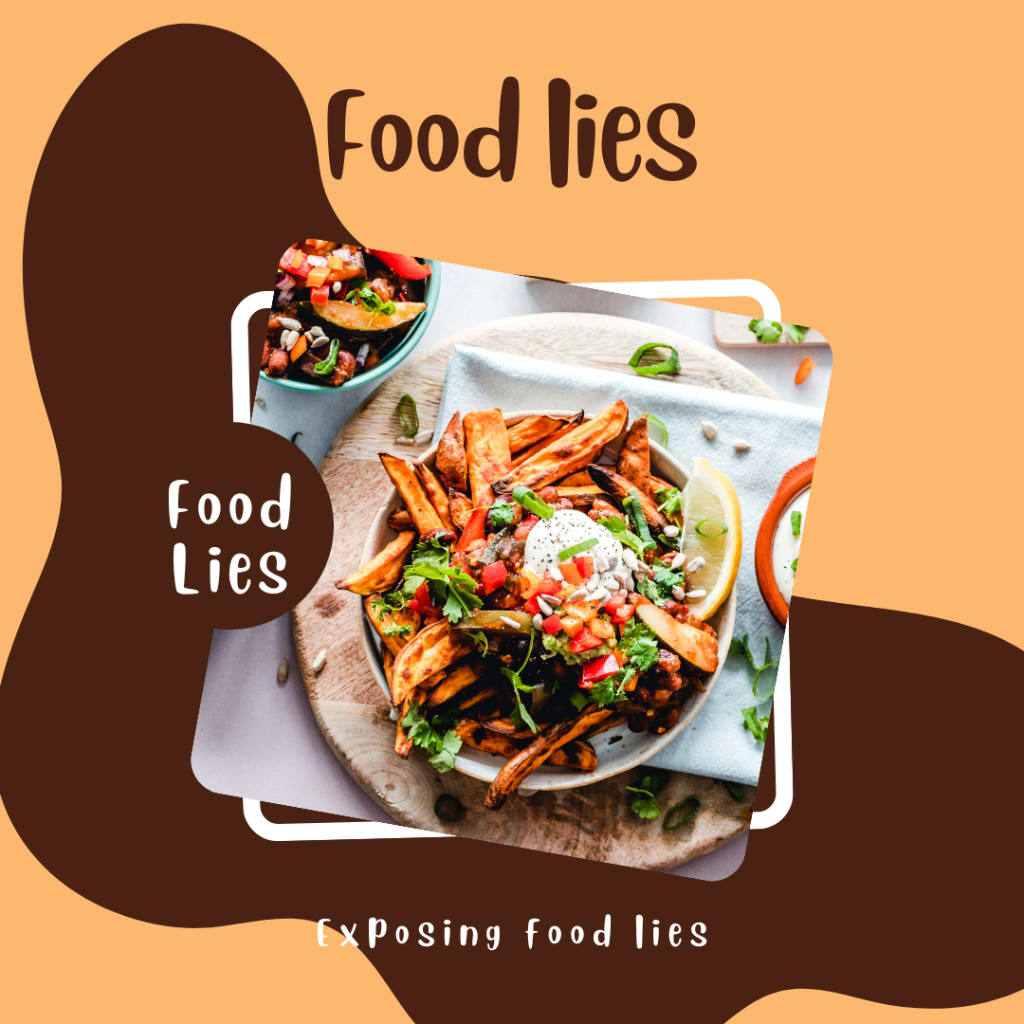Content warning
This story may contain sensitive material or discuss topics that some readers may find distressing. Reader discretion is advised. The views and opinions expressed in this story are those of the author and do not necessarily reflect the official policy or position of Vocal.

Exposing the Food Lies You've Been Told
Have you ever realized that you’ve never actually eaten a real cinnamon roll in your life? Those fancy Italian dinners with your friends might just have been scams, and chances are you’ve never tried an authentic milkshake either. Feeling like your whole life is a lie? Don’t worry—I’m here to uncover the truth behind these food deceptions. Stick around to learn how supermarkets sell you fake Caesar salads and why the only genuine thing you’ve probably tasted is that artificially colored red velvet cake.
Do you like mashed peas? I don’t, and I still have nightmares about the swamp-like puree my mom used to force-feed me as a kid. But peanut butter? That’s a different story. Interestingly, peanuts aren’t actually nuts—they’re legumes. So why call it peanut butter when it’s neither a nut nor a dairy product? No one knows for sure, but it’s likely due to its spreadable, nut-like texture.
The heart of a Caesar salad is its dressing, a mix of olive oil, eggs, lemon juice, and Worcestershire sauce. By the way, the three hardest things to say are "I love you," "I apologize," and "Worcestershire sauce." But I digress. The point is, many supermarket Caesar salads are scams, loaded with mayo and other unexpected ingredients. Source? Trust me, bro.
Farm-raised salmon is often as pale as a Twilight vampire, but don’t expect it to sparkle. This fish’s natural diet in the wild includes shrimp and algae, which gives it a vibrant pink hue. However, farmed salmon get their color from carotenoids added to their feed. Without this, farm-raised salmon would look as white as Bella Swan.
Many supermarket pesto sauces claim to follow traditional Genoese recipes, but often, they sneak in extra ingredients to thicken the sauce. I get adding a bit of sugar, but bamboo fibers? I mean, I love pandas, but I’m not one.
An American journalist once visited 25 sushi spots in NYC and LA, gathering samples for DNA testing. The results were shocking: 68% of the sushi was not what it claimed to be. White tuna was often substituted with escolar, also known as the “Ex-Lax fish” because it can cause digestive distress. This fish is banned in Japan and Italy but is legal in the U.S. And that green wasabi paste you love? It’s likely a mix of horseradish, mustard flour, cornstarch, and green food coloring, not real wasabi.
Supermarket apples may look fresh, but they can be over a year old. In the U.S., apples are harvested between August and September, treated with chemicals, waxed, and stored in cold warehouses for up to 12 months. So, the average supermarket apple is about 14 months old when you buy it.
Red velvet cake’s color comes from a chemical reaction between cocoa powder and acidic ingredients like buttermilk and vinegar. This reaction creates a reddish-brown hue, not the bright red we see in many cakes today, which are packed with artificial coloring.
Those prepackaged cheese slices? They’re not real cheese. They contain less than 50% actual cheese, with the rest being fillers and additives, so they’re correctly labeled as “cheese product.”
Many commercial blueberry products don’t contain real blueberries but are instead full of sugar, corn syrup, and artificial flavors. Always check the ingredients list for real blueberries to ensure you’re getting the genuine article.
Purple carrots used to be the norm until Dutch growers bred the now-popular orange variety to honor the House of Orange. The orange carrot quickly became the favorite, overshadowing the purple and yellow varieties.
That canned pumpkin you buy for pies might not be pumpkin at all, but squash. The FDA allows companies to use squash in place of pumpkin because it’s tastier and more compact.
Milkshake regulations vary by state. For example, in California, you might find raw milk, but it’s illegal in places like Florida and Illinois. McDonald’s calls their shakes “shakes” because they don’t meet the legal definition of a milkshake due to their soft-serve ice cream mix. Similarly, Dairy Queen’s iconic Blizzard isn’t technically ice cream because it doesn’t contain enough milk fat.
Your favorite cinnamon rolls? They probably don’t have real cinnamon in them. Most commercial rolls use cassia, a cheaper alternative to true cinnamon.
Portabella mushrooms aren’t a distinct type but are simply mature cremini mushrooms that have grown larger. It’s just an age difference.
Churros aren’t necessarily Mexican, despite popular belief. Their origins are murky, with claims from Spanish shepherds, Portuguese sailors, and even the Chinese.
Most truffle oils are made with synthetic compounds that mimic the taste and smell of real truffles, rather than actual truffles. This keeps costs down but compromises authenticity.
That’s it for today! If you’ve enjoyed uncovering these food truths, give this article a like and share it with your friends. For more eye-opening insights, check out my other articles and stay informed!
I
About the Creator
Enjoyed the story? Support the Creator.
Subscribe for free to receive all their stories in your feed. You could also pledge your support or give them a one-off tip, letting them know you appreciate their work.





Comments (1)
Please feel free to do share your thought